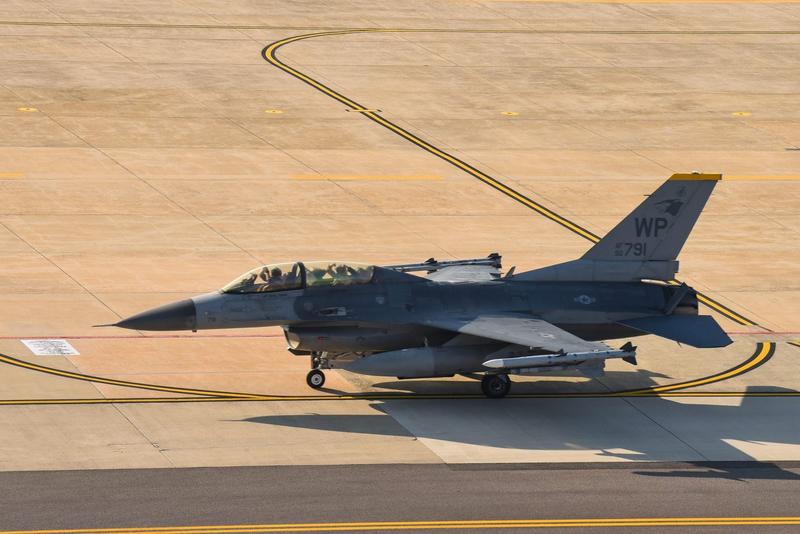
The green light for F-16 to Ukraine is the last “red line” crossed during the war. From the beginning of the conflict, it was believed that sending Western planes to Kyiv could be a risky decision due to the difficult and complex balance created with Russia, writes Inside Over.
Ukraine appears to have received its first signal that it may be dreaming of American F-16 fighter jets after US President Joe Biden said he supports joint allied training programs for Ukrainian pilots on the multi-role aircraft.
Biden’s remarks at the G7 summit in Japan came days after Britain and the Netherlands said they were forming an “international coalition” to help Ukraine buy F-16 jets as it seeks to improve its defenses against Russian airstrikes, CNN said.
However, Kyiv has not yet received specific public commitments regarding their delivery.
So far, Western powers have not considered bringing Western aircraft into the region, and it took the participation of the G7 in Hiroshima to make progress in this regard.
There are several reasons for this delay:
- First, concerns about relations with Russia and the complex geopolitical balance.
The transfer of F-16 fighter jets to Ukraine will raise questions about NATO’s involvement in the conflict, Russian Ambassador to the United States Anatoly Antonov said in a statement published on Monday morning, Reuters reported.
“Ukraine does not have the infrastructure for the operation of the F-16, there is not the necessary number of pilots and service personnel,” said Antonov’s message on the embassy’s Telegram channel. “What happens if US fighter jets take off from NATO airfields controlled by foreign ‘volunteers’?”
- Also key issues were the training of Ukrainian pilots and the infrastructure needed to house and maintain these aircraft.
On the one hand, there is a place: where the Ukrainian forces will train. Another point is at the expense of what, because many may not provide the necessary means for training Kyiv aviators. The third aspect is the time required for pilots to be sufficiently trained.
- The text also highlights the complexity of using F-16s in this conflict and the potential vulnerabilities and obstacles associated with their deployment in Ukraine today.
Ukrainian airstrips are not suitable for these aircraft, the logistics chain and maintenance centers would be very vulnerable or in any case unsuitable for servicing these aircraft. In addition, Kyiv’s lack of a true impenetrable defense system would make potential F-16 bases easy prey for Russian missile attacks.
The text concludes by highlighting the difficulties and considerations of sending F-16s to Ukraine and notes that some think tanks believe Gripen aircraft are better suited to Ukraine’s needs.

F-16 Fighting Falcon Photo: Tsgt. Timothy Deshinat/US Air/Zuma Press/Profimedia
F-16s cannot win the war alone
However, complying with the wishes of the Ukrainian army is not the solution to winning the war, according to American experts in a CNN analysis. Analysts warn that the planes are not “silver bullets” and have vulnerabilities that Moscow is well aware of and can exploit.
A pilot who still flies an F-16 fighter jet told CNN that Ukrainians’ expectations may actually be too high.
“To your question about whether the F-16 will matter. He won’t do it,” said the pilot on condition of anonymity because he is not authorized to speak on the subject.
Ukrainian Air Force Commander Serhii Golubtsov said that Ukraine desperately needs F-16 fighter jets, which, he said, are “four to five times” more effective than the Soviet-era jets that Ukraine currently uses, Reuters reports.
F-16, the most popular fighter in the world
The F-16 is a multi-role aircraft capable of performing air defense missions, strike missions against land and sea targets in all weather conditions, day and night, as well as aerial reconnaissance missions.
The US Air Force calls the F-16, which first entered service in the 1970s, “a relatively inexpensive and highly effective weapon system.”
Thousands of aircraft were built over the decades and hundreds of aircraft were exported around the world.
Nearly 2,200 F-16s are currently in service worldwide, making it the most popular fighter jet on the planet, accounting for 15 percent of the world’s fleet, according to the director of Air Force Flight Global.
Ukraine will not receive old F-16s
It is expected that the F-16 fighter jets that may end up in Ukraine will be older versions that were in the fleets of US allies, particularly in Western Europe.
Analysts say that the F-16s that Ukraine will receive are not the oldest, but aircraft that have received avionics and updated software.
Ukraine announced the need for about 200 F-16 fighters.
“The West has a surplus of F-16s that provide immediate availability and a well-established logistics route,” said Robert Hopkins, a former US Air Force pilot.
“There are other aircraft that are more capable than the F-16, but they are fewer and not available for transfer,” Hopkins added.
Source: Hot News
James Springer is a renowned author and opinion writer, known for his bold and thought-provoking articles on a wide range of topics. He currently works as a writer at 247 news reel, where he uses his unique voice and sharp wit to offer fresh perspectives on current events. His articles are widely read and shared and has earned him a reputation as a talented and insightful writer.